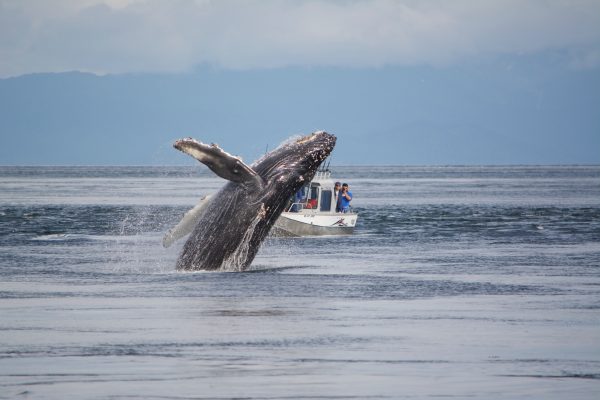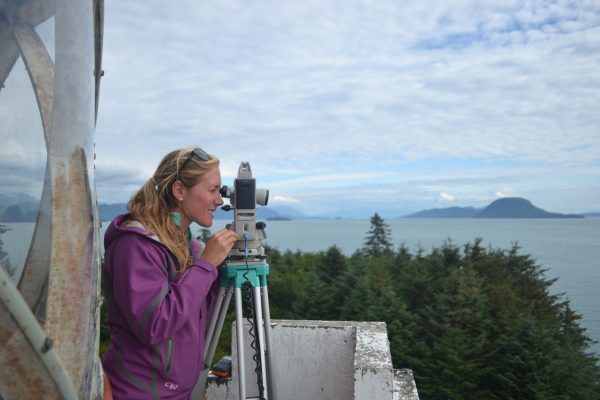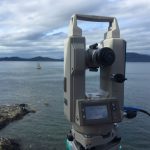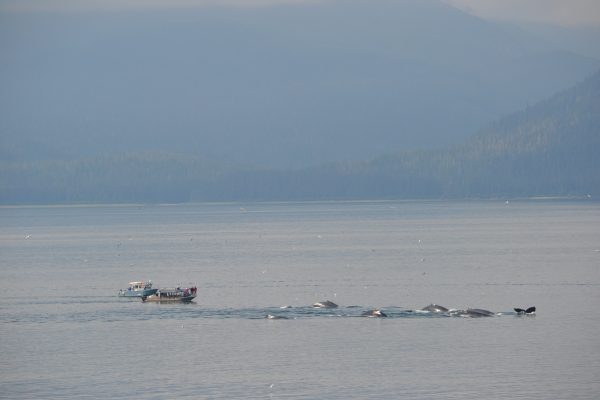UAF student studies whale-watching impacts on humpbacks
April 30, 2018
Paula Dobbyn
907-274-9698

Whale watching is a booming business in Alaska’s state capital. In the past 20 years, the number of whale-watching boats in the waters around Juneau has roughly doubled. Scientists are hoping to find out if this burgeoning industry is affecting the animals.
The business is valued at about $35 million annually, according to the McDowell Group, and its rise parallels that of the cruise ship industry, whose presence in Southeast Alaska has grown enormously during the last couple of decades.
About a million people came to Alaska by cruise ship last year, most of them traveling up the majestic Inside Passage where Juneau is located. That number is expected to grow by 19 percent, to 1.3 million passengers in 2019, according to Cruise Lines International Association. About a quarter of all cruise passengers go on whale watching trips while in port. With no limits on the allowed number of whale viewing vessels, the size of the industry can also be expected to grow, according to University of Alaska researchers.
How are the region’s humpback whales responding to this increased attention? Ali Schuler, a University of Alaska Fairbanks master’s student with the College of Fisheries and Ocean Sciences, is attempting to answer that question with assistance from her academic adviser Heidi Pearson, University of Alaska Southeast assistant professor. Schuler spent the last two summers closely observing whales at research stations on Lena Point, which is within driving distance of downtown Juneau, and Point Retreat, at the tip of nearby Admiralty Island.

At a recent American Fisheries Society student symposium in Juneau, Schuler presented some of her preliminary findings. Noting that she’s still crunching data, Schuler said it’s clear that whale watching boats are causing the humpbacks to change some of their movements and behavior.
Using a surveying instrument, called a theodolite, connected to a computer equipped with data-acquisition software, Schuler and her assistants tracked humpbacks when whale-watching vessels were present and when they were not.

“In the presence of vessels, the whales have a higher reorientation rate and move at higher speeds indicating a possible vessel-avoidance strategy,” Schuler said.
That means when boats are around, the whales tend to shift their movement patterns, swim faster, and take more breaths, at least in the short term.
Whether this is detrimental to the whales or not remains to be seen.
Schuler’s research also involved interviewing whale-watching passengers to gauge their knowledge of federally mandated guidelines and rules governing whale watching. One of the primary rules is that boats are not allowed to approach a whale any closer than 100 yards. Another is that vessels are not supposed to disrupt the normal behavior or activity of a whale, and that they should never cross the path of an oncoming whale.

Schuler surveyed passengers before their whale-watching excursion, immediately afterward, and then for those who were willing, six months after their trip. She found that people were much more aware of the regulations and supportive of them after taking their excursion.
She sees that as a positive sign.
“Whale watching can foster passenger knowledge and can influence attitudes about regulations over time. That might encourage better self-regulation by the industry over the long term,” said Schuler.
Schuler expects to complete her degree in 2019. Her research is funded in part by Alaska Sea Grant.
Read a Juneau Empire story about Schuler’s project here.
Watch a video about it here.


